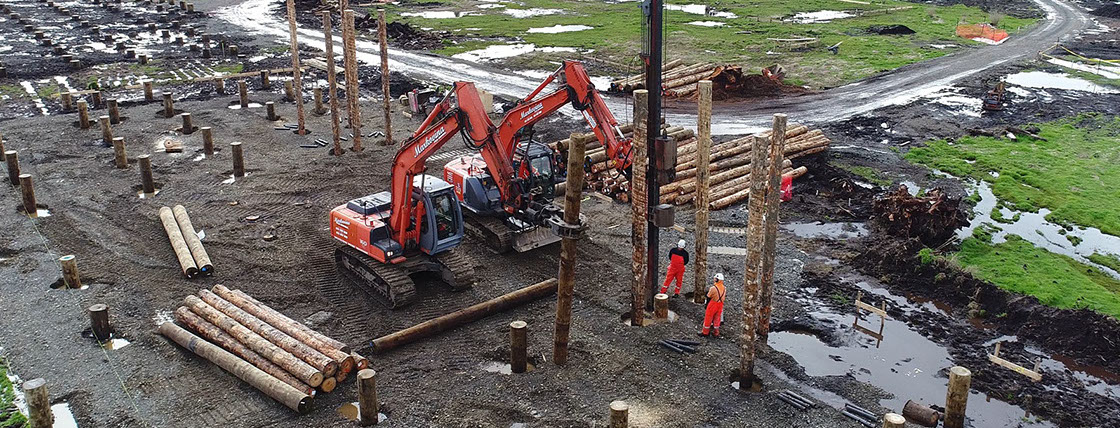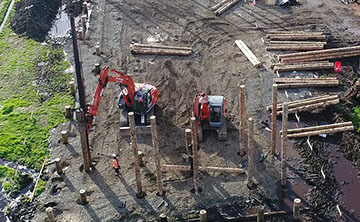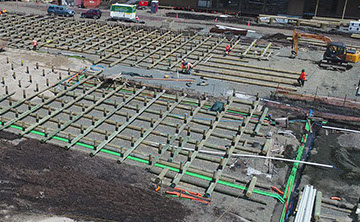Talk to us
Both Deep Pile Foundations and Raft Foundations were used to provide foundation solutions for several timber-floored buildings for a new school.

Our MultiPole Uglie poles, 250–350mm, were used as friction piles providing a Deep Pile Foundation, and installed down to depths of up to 30m using sections from 4.8m to 12.0m joined with proprietary MultiPole Connectors.
The Deep Pile Foundations relied on a combination of skin friction and end bearing to provide resistance to tension and compression earthquake loads.
The unique hollow core of the MultiPoles allowed for fast installation via vibration and pile driving.
Raft Foundations were considered light enough for the low bearing capacity of the ground.
The foundations for all blocks needed to be able to handle both tension and compression earthquake loads concentrated in several points due to the use of portal frames in the superstructure above.
The ground consisted of 50m of soft, compressible peat with intermediate lenses (thin layers) of dense sand which meant in a very weak soil structure with negligible support.
The ground water table was 300mm below ground level.
The client had requirements over and above the building regulations that had to be met in terms of future expected settlements and the surrounding ground considerations.
Shallow foundations suitable for 60kPa Geotechnical Ultimate Bearing Capacity were required.
The first stage of the school needed to be opened as soon as possible which meant that several blocks were being installed at the same time – the site was busy and tight for space.
Installation needed to be rapid.


The Raft Foundations had concrete-topped sections which provided resistance to tension earthquake loads.
All foundation solutions were engineered, designed, and peer-reviewed.
Future housing and infrastructure development in the area was taken into account during design to allow for future predicted ground settlement.
Static load testing was carried out on several occasions to verify the performance of the foundations to twice the Ultimate Limit State (ULS) loads.
Several blocks, completed and in use, had their floor levels monitored for the first 6 months to verify that the foundation settlements were within the requirement parameters.
Find out more about the Raft Foundation system
DOWNLOAD
CRF01 – Foundations for an existing residential dwelling
CRF02 – Foundations for a new school
DOWNLOAD
CRF03 – Foundations for a residential dwelling extension
DOWNLOAD
view TECH SHEETs
VIEW CASE STUDies